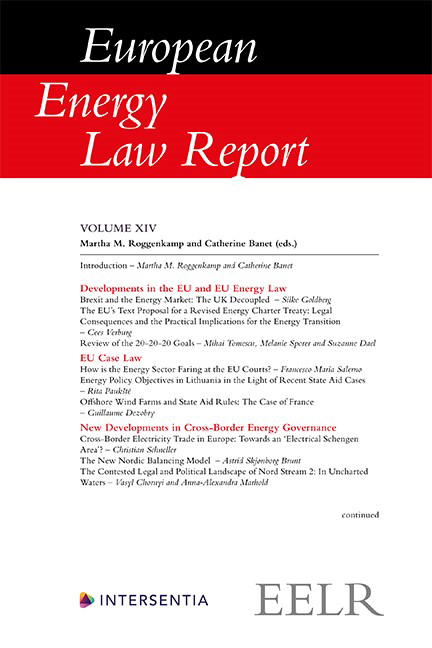Chapter VI - Offshore Wind Farms and State Aid Rules: The Case of France
Published online by Cambridge University Press: 26 May 2022
Summary
INTRODUCTION
Despite the fact that France has one of the main seafronts in Europe, it does not currently have any offshore wind farms connected to the grid and in operation. Such a result is all the more surprising given that the French authorities have long set ambitious development objectives for this technology. In this respect, it is worth recalling that the first article of the Decree of 15 December 2009 relating to multi-annual programming investments (Programmation Pluriannuelle des Investissements) in electricity production indicated a target for offshore wind farm of 6,000 MW (installed capacity) before the end of 2020. French energy policy has since continuously integrated this technology into the development plans of renewable energy. The first tenders were launched almost ten years ago and several offshore wind farms are under development. In addition, the objectives set out in the last multi-annual energy programme (PPE) remain high and the sector’s growth should be sustained in the coming years.
The absence of any offshore wind farm in operation is partly explained by the numerous appeals brought to the courts by opponents of these projects as well as to complex permitting and regulatory procedures. Even if the legal framework has evolved recently in order to speed up the process of development of such projects, the amount of time required to bring an offshore wind farm in operation still remains very long.
As the electricity produced by offshore wind farms is not yet competitive on the French market, the national authorities have granted financial support mechanisms for the benefit of the operators of those plants in order to encourage them to engage in this production. The type of support has changed over time: the first projects benefited from feed-in-tariffs and now aids granted consist of feed-in-premium.
The control of the compatibility of the aid granted to these projects under EU State aid rules, as operated by the European Commission, raises a series of central legal questions. In the first place, the duration of the development of such projects can extend over periods during which several versions of the Guidelines on State Aid for Environmental Protection and Energy (EEAG) follow one another, raising the question of which version remains applicable when the Commission exercises its control (see section 3).
- Type
- Chapter
- Information
- European Energy Law Report , pp. 115 - 128Publisher: IntersentiaPrint publication year: 2021



